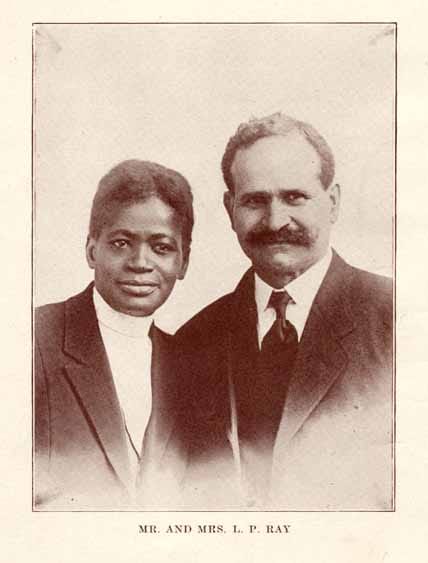Before Justice Was a Buzzword: Emma J. Ray and the Free Methodist Call to the Margins

Missional Heritage Series
“Born of woman, born of God; sold in slavery, sold to the devil; freed by Lincoln, set free by God.”
This striking declaration by Emma J. Ray encapsulates her life’s testimony—a journey of liberation both earthly and eternal. Her story begins in bondage and ends in holy commission. Emma wasn’t merely a figure of her time; she was a prophetic voice for ours.
In our current cultural moment, conversations about justice saturate pulpits, podcasts, and policy debates. But long before justice became a buzzword, the Free Methodist Church was born out of a radical conviction: that true holiness demanded action for the oppressed. We rejected slavery, abolished pew rents that excluded the poor, and affirmed women as Spirit-called ministers. Emma J. Ray, a formerly enslaved Black woman and licensed evangelist, embodies that original Free Methodist impulse. Her life and ministry remind us that evangelism and justice were never meant to be separated.
The Justice Roots of the Free Methodist Movement
Founded in 1860, the Free Methodist Church emerged as a protest against spiritual complacency and social compromise. Leaders like B. T. Roberts insisted that biblical holiness required concrete action. "Free" in our name referred to both freedom from slavery and free pews for all worshipers. This was not mere doctrine—it was discipleship lived out on the margins. Early Free Methodists embraced entire sanctification, not as personal piety alone, but as empowerment for Spirit-led mission to the poor, the enslaved, and the outcast.
Emma J. Ray: Sanctified and Sent
Emma J. Ray was born into slavery in 1859 in Missouri. After emancipation, she eventually settled in Seattle with her husband, Lloyd, following their conversion and experience of sanctification. Emma testified:
“The Lord sanctified my soul and commissioned me to work in His vineyard.”
—Twice Sold, Twice Ransomed
This sanctifying love launched her into action. She co-founded the Frances Harper chapter of the Women’s Christian Temperance Union, the first Black WCTU in Washington. She ministered in jails, under bridges, and in brothels—offering food, clothing, prayer, and the message of Jesus. When the Rays joined the Free Methodist Church, they were licensed as evangelists and traveled to conduct revival meetings across the state.
Ray’s holistic vision of mission—prayer and food, gospel and justice—flowed directly from her understanding of sanctification.
As a Black woman in 19th-century America, Emma faced intersectional barriers of racism and sexism. But she refused to be silenced. Her leadership in public ministry, her bold witness in male-dominated religious spaces, and her declaration that she would not trade places or faces with anyone revealed a sanctified defiance that still speaks today.
“I am perfectly satisfied with my color... I have never seen anyone with whom I would change faces or places.”
Her identity as a Black woman and a sanctified believer were not in tension—they were united in her call.
Lessons in Contextual Mission
Emma J. Ray didn’t wait for institutional approval to start ministry. She lived missionally from the grassroots. Her life teaches us essential truths for today’s church:
- Embodied presence: Emma moved into the places others avoided. She brought the gospel to the street, the jail, the orphanage—not just the church building.
- Mercy + proclamation: Her work never separated justice from evangelism. Feeding the hungry and preaching Christ were one integrated act.
- Lay leadership: Emma was not seminary-trained or formally ordained. Her authority came from the Spirit and was recognized by the church. She reminds us to empower women and marginalized leaders.
Implications for the Free Methodist Church Today
Emma Ray offers us more than inspiration; she offers a blueprint. As we talk about "God-given worth" and "love-driven justice," we must ask: are we still going to the margins? Are our churches equipping leaders like Emma—poor, Black, female, Spirit-called? Do our discipleship pathways include sanctification that leads to social transformation?
Emma’s witness challenges our systems of credentialing, leadership, and outreach. Her model is not nostalgic—it is prophetic.
Multiplying Justice-Oriented Expressions of Church
If Emma J. Ray were among us today, she might be under a bridge handing out food. She might be organizing a women’s prayer circle in a jail. She might be preaching in a storefront church in a gentrified neighborhood. And in all these places, she would still be proclaiming freedom:
“Born of woman, born of God; sold in slavery, sold to the devil; freed by Lincoln, set free by God.”
Let us not merely honor her memory—let us multiply her method. Let us plant churches that look like rescue missions, disciple leaders who look like Emma, and pursue justice not because it's popular, but because it is holy. In doing so, we walk faithfully in the original Free Methodist call.
Because justice was never a trend. For us, it has always been the fruit of sanctified lives—lived on purpose, among the poor, in the power of the Spirit.
Download Twice Sold, Twice Ransomed by Emma J. Ray in full PDF, hosted by UNC’s Documenting the American South:
